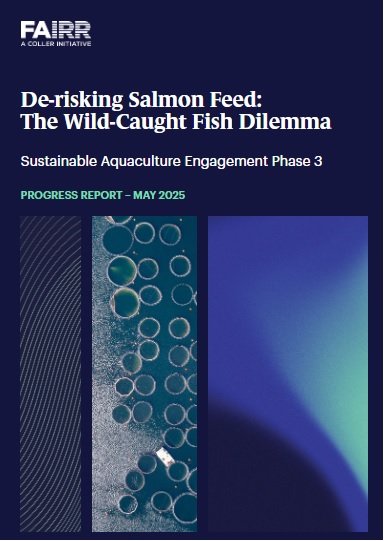Australia – The sustainable growth of the world’s fed aquaculture industry could be bolstered by increased use of novel feeds from sources other than wild-caught fish, a new international study led by University of Tasmania researchers has found.
Approximately 16 million of the 29 million tonnes of forage fish (such as herrings, sardines and anchovies) caught globally each year are currently used for aquaculture feed.
Wild catch of forage fish has remained stagnant since the 1980s, so for the aquaculture industry to continue to grow it is essential to consider alternatives to using fishmeal and oil in feeds.
The study published in the journal Nature Food found that wider adoption of novel aquaculture feeds based on microalgae and insect protein and oils could substantially reduce the sector’s demand for wild fish by 2030.
Lead author Richard Cottrell, a former IMAS and Centre for Marine Socioecology PhD student, said the study also found that, according to demand scenarios, fed aquaculture production could almost double over the next decade.
“The annual catch of wild fish has been static for almost 40-years but over the same period production from aquaculture has grown enormously,” Dr Cottrell said.
“Small wild forage fish are used in feeds for many aquaculture species but there has been a shift towards reducing wild fish ingredients due to price and availability.
Stay Always Informed
Join our communities to instantly receive the most important news, reports, and analysis from the aquaculture industry.
“As demand for seafood rises and aquaculture grows there is a need to source suitable and sustainable feed ingredients.
“We looked at a range of scenarios to predict future aquaculture production and, depending on consumer preferences, we found growth of between 37 and 98 percent is likely.
“Even limited adoption of novel feeds could help to ensure that this growth is achieved sustainably, which will be increasingly important for food security as the global population continues to rise,” he said.
The research team analysed results from 264 scientific studies of farmed fish feeding experiments from around the world and found that novel aquafeed ingredients can substitute fishmeal and oil in the feeds of many species without negative impacts on feed efficiency or omega-3 profiles.
“Previous work has identified that species such as carps and tilapias respond well to complete fishmeal elimination from their feeds, although others such as salmon are still more dependent on fish-based feeds to maintain essential growth and support metabolism.
“Current innovations targeting reductions in the consumption of fish oil in aquaculture are therefore really promising, and widespread reductions of fish oil from the diets of farmed salmonids, shrimps and marine fish in coming years will allow more judicious use of marine feed resources alongside positive growth in the aquaculture industry.
“Further improvements in feed manufacturing technologies and feed nutrition will be fundamental to the production of more efficient and effective feeds, potentially allowing substantial reductions in the industry’s demand for fishmeal and oil in the future,” Dr Cottrell said.
Co-author and IMAS Associate Professor Julia Blanchard said the study is part of ongoing research that connects aquaculture with global sustainability challenges.
“Our future research will continue to look at the wider consequences and trade-offs of shifting towards novel feed ingredients, including assessing the impacts on both marine and terrestrial environments as well as balancing these with social and economic outcomes,” Associate Professor Blanchard said.
The study also included scientists from the University of California Santa Barbara, and the International Atomic Energy Agency.
Reference:
Cottrell, R.S., Blanchard, J.L., Halpern, B.S. et al. Global adoption of novel aquaculture feeds could substantially reduce forage fish demand by 2030. Nat Food 1, 301–308 (2020). https://doi.org/10.1038/s43016-020-0078-x
Source: University of Tasmania
Editor at the digital magazine AquaHoy. He holds a degree in Aquaculture Biology from the National University of Santa (UNS) and a Master’s degree in Science and Innovation Management from the Polytechnic University of Valencia, with postgraduate diplomas in Business Innovation and Innovation Management. He possesses extensive experience in the aquaculture and fisheries sector, having led the Fisheries Innovation Unit of the National Program for Innovation in Fisheries and Aquaculture (PNIPA). He has served as a senior consultant in technology watch, an innovation project formulator and advisor, and a lecturer at UNS. He is a member of the Peruvian College of Biologists and was recognized by the World Aquaculture Society (WAS) in 2016 for his contribution to aquaculture.



